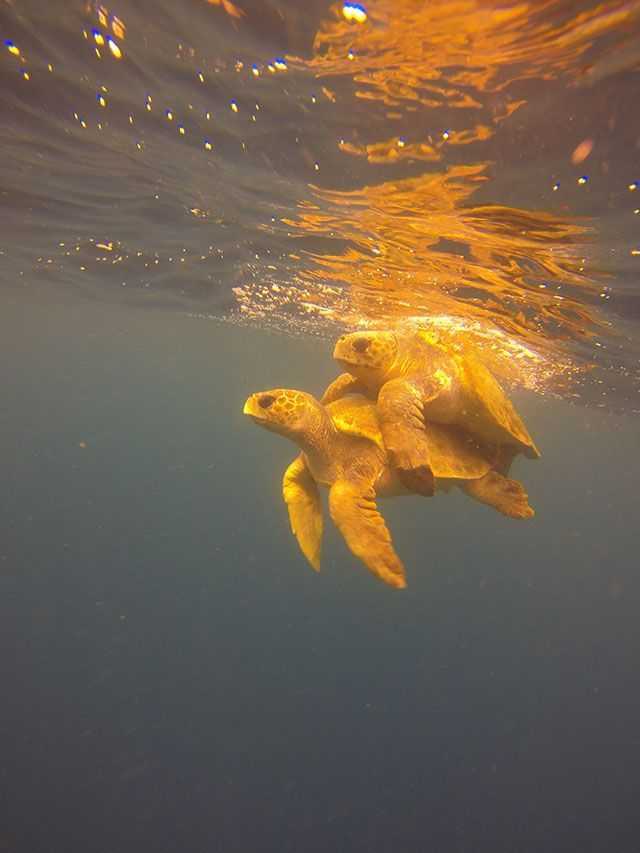
[dropcap]A[/dropcap]pril marks the return of sea turtles in large numbers to South Florida and as spring gets underway divers should expect to see an increase in sightings on area reefs.
Florida coastal waters are home to five different species of marine sea turtles that divers have the opportunity to encounter while underwater. Loggerheads, hawksbill, and green turtles are relatively common, whereas leatherback and Kemp’s Riddley are a rare treat to witness.
Encounters with these gentle giants underwater can be quite an exhilarating experience even for season veterans but all divers should excursive caution in their presence. All Florida sea turtles are protected by the endangered species act making it against the law to harass or otherwise interfere with their normal behavior. Many consider it a violation to impede their direction of travel underwater.
Turtles can hold their breath for quite a long time but must return to the surface to breathe. On the surface, they will make a series of shallow dives to catch their breath, spending five to ten minutes breathing up before heading back down to the reef. Boaters will no doubt come across turtles on the surface and should be extra vigilant while cruising area reefs. Another common sight at the surface this time of year is mating pairs of loggerheads. Once begun, mating can last for several hours, leaving turtles vulnerable to passing boat traffic. Care should be taken to avoid disturbing breeding activities.
Identifying the differences between the species is relatively easy if divers apply the process of elimination and pay attention to a few basic features including color and head shape. Loggerhead turtles are by far the most abundant in Florida and are usually yellowish-tan in color and have smooth shells while leatherbacks are super rare and have deep ridges running lengthwise and colored dark-grey to blackish. Hawksbills get their name from a distinct downward hook shaped upper jaw similar to a bird of prey. Kemps Ridleys are considered the rarest turtle in the world and are seldom seen by divers whereas green turtles are more common. Photographs during encounters help identify turtles later.
Divers are encouraged to report sightings of tagged hawksbill to the Florida Hawksbill Project (floridahawksbills.com) to aid ongoing research. Tags are located on the front flippers, near the ‘armpit’ area.
[easy-social-share]